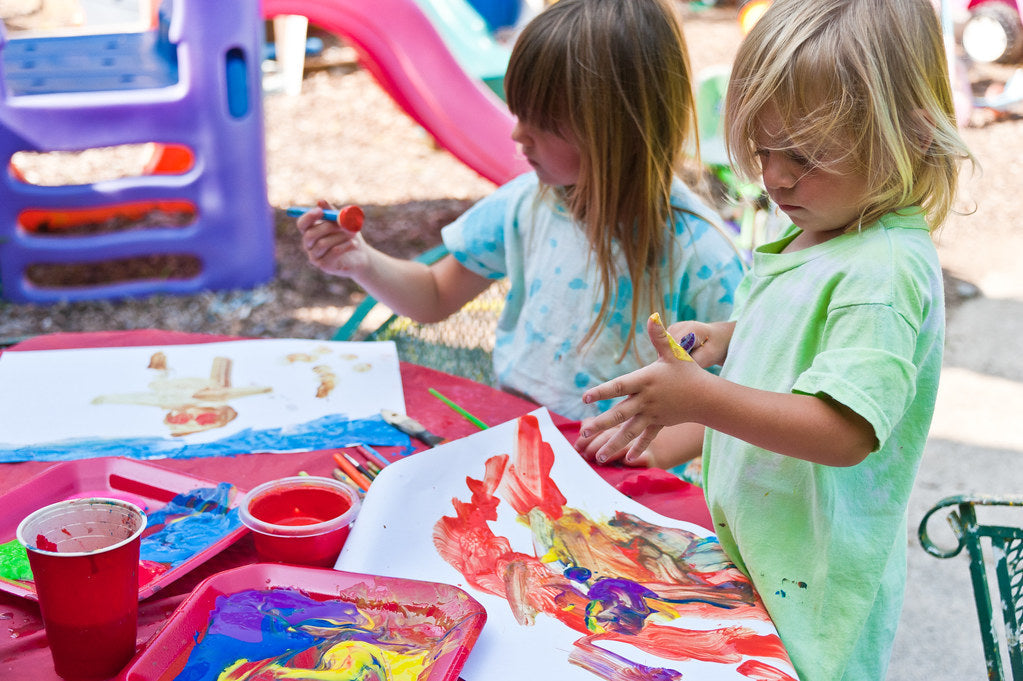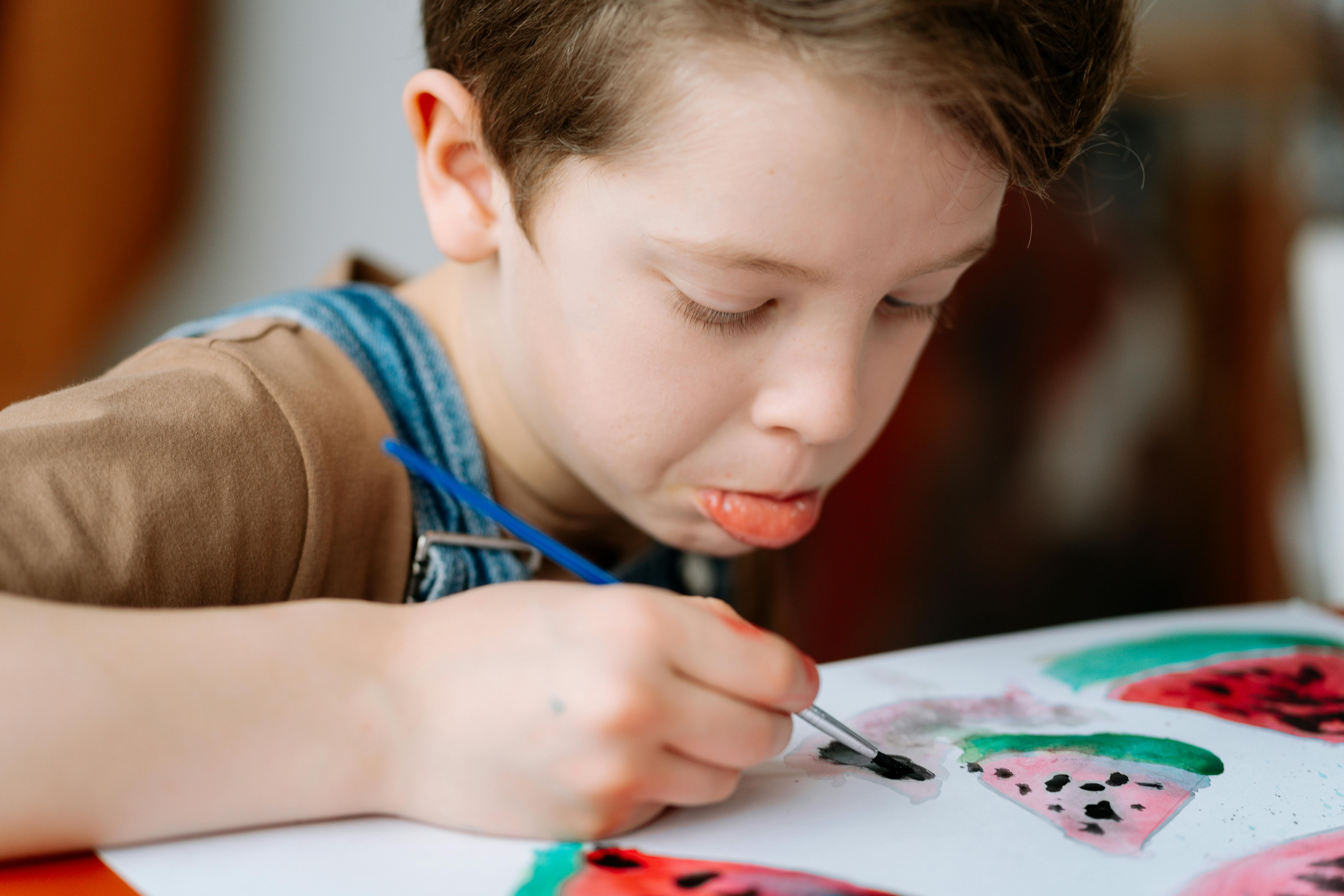
Pretty Projects or A Better Process?
July 12, 2019
By Beth Herrild
Over the years, I have had discussions with many parents and several elementary classroom teachers about the desire for pretty products versus a valuable process when it comes to kids’ art. The last year I was an art docent in my daughter’s classroom, her teacher was getting pressure from parents of some of her other students to produce the same beautiful pieces of artwork that the other classes had put up in the hallway. I have also had parents say to me, “I want my child’s art to look like that,” and “My child wants her drawings to look like that.” Should art be pretty or a means of developing life-skills mastery? In order to untangle this difficult issue, we need to examine why it is good for kids to create art and what you, the parent and/or teacher want them to get out of the experience.
According to the National Art Education Association, these are just some of the things that a high quality visual arts education does for kids:
• Develops Future Workforce Skills like communication, collaboration, critical thinking & problem solving.
• Reinforces Social & Emotional Learning through self-awareness, social awareness, relationship skills and responsible decision making. (I would add enhancing self esteem and empathy since many studies have clearly indicated this.)
• Builds Cultural Competency by building knowledge and understanding of diverse cultures.
• Promotes Creativity & Innovation by encouraging multiple approaches to solving a problem.
• Nurtures Essential Childhood Learning because visual literacy is a child’s first language for communicating thoughts, developing motor and communication skills and helping them understand and make meaning of their lives within their families and communities.
So, if we want kids to get all of this good stuff from art, why would we teach them step-by-step how to make their projects exactly like ours, and take away all of their creativity and decision making opportunities? The Outside the Box Creation philosophy is that we wouldn’t.
Sure, a little bit of direction is good for elementary-age kids; but as children progress into their middle and high school years, specific instructions should gradually decrease. In our How Many Days to America Box, kids learn about composition and some pastel techniques. Teaching useful techniques is important, but there must be a balance, because young children can easily get too hung up on specific techniques and lose site of the big picture.

In our Kids’ Boxes, we walk a fine line between giving enough structure for everyone to feel relatively successful and offering lots of opportunities for decision-making and creativity. We often utilize the enclosed picture books to help kids become more observant about their world. For instance, in our Shapes Drawing Box, the book helped us show how complex shapes are made up of many simple shapes. Once kids start to see the simpler shapes, it is easier to draw them.

In our Atmospheric Perspective Box, the book’s illustrations help kids learn about the concept of atmospheric perspective and be able to recognize it when they are out in the world. In the Day of the Dead Box and the Raven Box, kids learn about other cultures and some techniques while still having opportunities for creativity.

Talk to your child about his/her art. As I mentioned in another blog post, by asking the right questions, you can help your child think more deeply and expansively about that project which will lead to the next projects being more detailed and nuanced. I value teaching kids how to think for themselves, how to be observant and creative, not how to make their project look exactly like mine. I also want them to get some satisfaction and enjoyment along the way!

